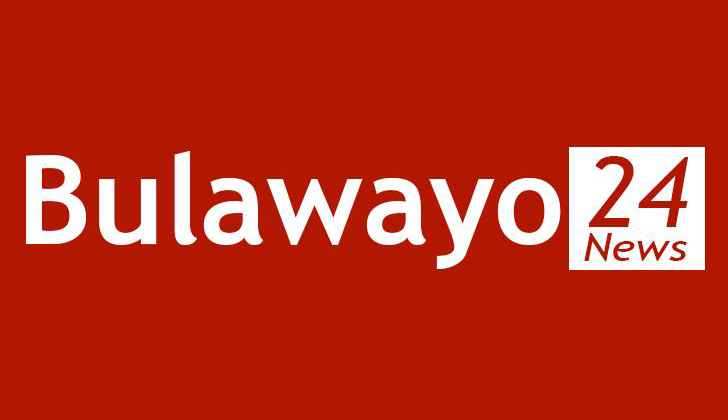News / National
Zimbabwe's gold boom masked by environmental ruin
5 hrs ago | Views

Zimbabwe's gold sector is experiencing one of its strongest rallies in years, but behind the production surge lies a darker reality of smuggling, lawlessness, and environmental collapse that threatens to undermine the gains.
Gold output has climbed sharply, with 24.3 metric tons produced in the first seven months of 2025—a 40% increase compared to the same period last year. Analysts project that output could surpass 40 tons by year-end, setting a new record, boosted by record global gold prices which hit US$3,500 an ounce in April.
The rebound marks a stunning recovery from the depths of Zimbabwe's 2008 economic crisis, when output collapsed to just three tons. The boom has also driven a spike in exploration, straining the country's testing laboratories that are now battling to keep up with mineral sample verifications.
But the growth masks deep fractures. The International Crisis Group estimates Zimbabwe is losing US$1.5 billion annually through gold smuggling, while artisanal miners and politically connected operations fuel violence, corruption, and environmental degradation.
Civil society organisations, led by the Centre for Natural Resource Governance (CNRG), have repeatedly raised alarm over conditions at Redwing Mine in Penhalonga, run by Better Brands Mining Company, owned by Zanu-PF legislator and gold dealer Scott Sakupwanya.
CNRG executive director Farai Maguwu described the mine as "a security threat and environmental disaster," citing violent clashes among politically aligned groups, extortion rackets disguised as "protection fees," and chaotic mining that sidesteps Ministry of Mines oversight.
"The situation in Penhalonga has seriously degenerated and needs an urgent solution. The government needs a proper investor to take over Penhalonga. The Better Brands model is a security threat and environmental disaster," Maguwu said.
Dozens of miners are believed to have died since Better Brands took over operations. Fatalities, often unreported, include two workers who drowned in underground floodwaters at Rezende Mine in 2023.
A 2022 CNRG petition accused the company of bypassing Environmental Impact Assessments and introducing unsafe production-sharing arrangements that expose miners to collapsing shafts and frequent accidents. Local monitors estimate at least five deaths a month.
In Shurugwi, Chinese-owned Cheng Xi Mine has been accused of devastating the Boterekwa mountain ranges, once a scenic natural landmark. Unregulated operations, allegedly protected by political connections, have scarred landscapes and endangered local ecosystems.
Similarly, in Mazowe, unregulated gold digging has been linked to political patronage networks that drive illicit financial flows. A CNRG report, Zimbabwe's Disappearing Gold: The Case of Mazowe and Penhalonga, estimates losses of up to US$1.9 billion annually.
Once one of Zimbabwe's most productive assets—producing 1.1 million ounces between 1966 and 2004—Redwing Mine is now synonymous with chaos, violence, and smuggling. Critics argue that the informalised model has converted it into a hub of lawlessness, undermining both community safety and state revenues.
Despite record-breaking output, the unchecked violence, ecological collapse, and illicit financial flows raise doubts over whether Zimbabwe's gold boom can deliver meaningful national benefits.
As CNRG warns, without decisive reforms, Zimbabwe's glittering production figures risk becoming yet another mirage in the country's troubled extractive history.
Gold output has climbed sharply, with 24.3 metric tons produced in the first seven months of 2025—a 40% increase compared to the same period last year. Analysts project that output could surpass 40 tons by year-end, setting a new record, boosted by record global gold prices which hit US$3,500 an ounce in April.
The rebound marks a stunning recovery from the depths of Zimbabwe's 2008 economic crisis, when output collapsed to just three tons. The boom has also driven a spike in exploration, straining the country's testing laboratories that are now battling to keep up with mineral sample verifications.
But the growth masks deep fractures. The International Crisis Group estimates Zimbabwe is losing US$1.5 billion annually through gold smuggling, while artisanal miners and politically connected operations fuel violence, corruption, and environmental degradation.
Civil society organisations, led by the Centre for Natural Resource Governance (CNRG), have repeatedly raised alarm over conditions at Redwing Mine in Penhalonga, run by Better Brands Mining Company, owned by Zanu-PF legislator and gold dealer Scott Sakupwanya.
CNRG executive director Farai Maguwu described the mine as "a security threat and environmental disaster," citing violent clashes among politically aligned groups, extortion rackets disguised as "protection fees," and chaotic mining that sidesteps Ministry of Mines oversight.
"The situation in Penhalonga has seriously degenerated and needs an urgent solution. The government needs a proper investor to take over Penhalonga. The Better Brands model is a security threat and environmental disaster," Maguwu said.
Dozens of miners are believed to have died since Better Brands took over operations. Fatalities, often unreported, include two workers who drowned in underground floodwaters at Rezende Mine in 2023.
A 2022 CNRG petition accused the company of bypassing Environmental Impact Assessments and introducing unsafe production-sharing arrangements that expose miners to collapsing shafts and frequent accidents. Local monitors estimate at least five deaths a month.
In Shurugwi, Chinese-owned Cheng Xi Mine has been accused of devastating the Boterekwa mountain ranges, once a scenic natural landmark. Unregulated operations, allegedly protected by political connections, have scarred landscapes and endangered local ecosystems.
Similarly, in Mazowe, unregulated gold digging has been linked to political patronage networks that drive illicit financial flows. A CNRG report, Zimbabwe's Disappearing Gold: The Case of Mazowe and Penhalonga, estimates losses of up to US$1.9 billion annually.
Once one of Zimbabwe's most productive assets—producing 1.1 million ounces between 1966 and 2004—Redwing Mine is now synonymous with chaos, violence, and smuggling. Critics argue that the informalised model has converted it into a hub of lawlessness, undermining both community safety and state revenues.
Despite record-breaking output, the unchecked violence, ecological collapse, and illicit financial flows raise doubts over whether Zimbabwe's gold boom can deliver meaningful national benefits.
As CNRG warns, without decisive reforms, Zimbabwe's glittering production figures risk becoming yet another mirage in the country's troubled extractive history.
Source - CNRG















